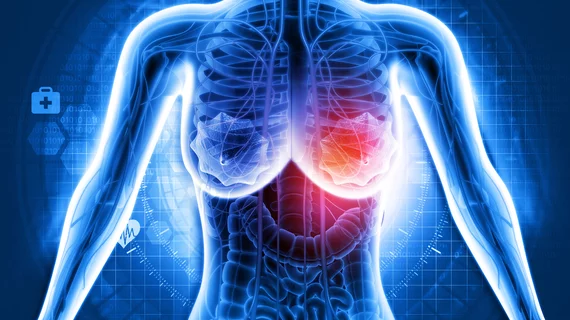A few simple changes have helped Michigan Medicine reduce wait times for biopsies along with excess additional healthcare appointments, according to new research published in JACR.
The academic institution had seen annual breast MRI volumes swell 94% in a few short years while corresponding guided biopsies soared nearly 150%. With that, patients were sometimes forced to wait several weeks for tissue diagnoses during a critical time in their care.
Michigan Medicine’s care pathway previously included the initial magnetic resonance imaging exam, followed by MRI-directed ultrasound to assess the suspicious lesion, and then a core biopsy. All three required separate appointments, forcing individuals to travel long distances multiple times to obtain services at the tertiary care center. In response, experts launched a quality improvement initiative, aiming to reduce the number of appointments down to two while delivering the core biopsy within two weeks or less.
“Same-day biopsy was proposed to department stakeholders, requiring a collaborative effort between MRI leadership, radiologists and schedulers,” W. Tania Rahman, MD, a clinical assistant professor of radiology in Michigan Medicine’s Division of Breast Imaging, and co-authors wrote Jan. 15. “Establishing a shared goal of improving patient access to imaging and biopsy services among all stakeholders was crucial to creating these new service lines.”
Rahman and colleagues detailed two recommendations to help reach their goals. First, based on recent literature, nonmass enhancement and foci (which are less likely to have a sonographic correlate) proceeded directly to MRI-guided biopsy. Scientists also developed an algorithm for recommending MRI-directed ultrasound, placing priority on masses. The second recommendation was accommodating the scheduling of MRI-directed ultrasound followed by same-day core biopsy. After an initial pilot proved successful, Michigan Medicine started offering such on-demand biopsies once a month, with case selection based on imaging and other patient factors, the authors noted.
Following these two changes, the percentage of MRI findings biopsied by ultrasound increased from 47.5% to 55%, “suggesting more appropriate use” of this approach. Meanwhile, the average number of patients requiring only two visits increased from 31% up to 61%. And the average time to biopsy fell from 19.3 days down to 14.2. Cost of tissue diagnosis per patient also decreased by about 1.4%, resulting in nearly $90 in savings per lesion.
“Though this situation may not apply to all institutions, the techniques used to manage limited resources and unite team members to effect change are relevant to a variety of practice settings,” the authors wrote.

